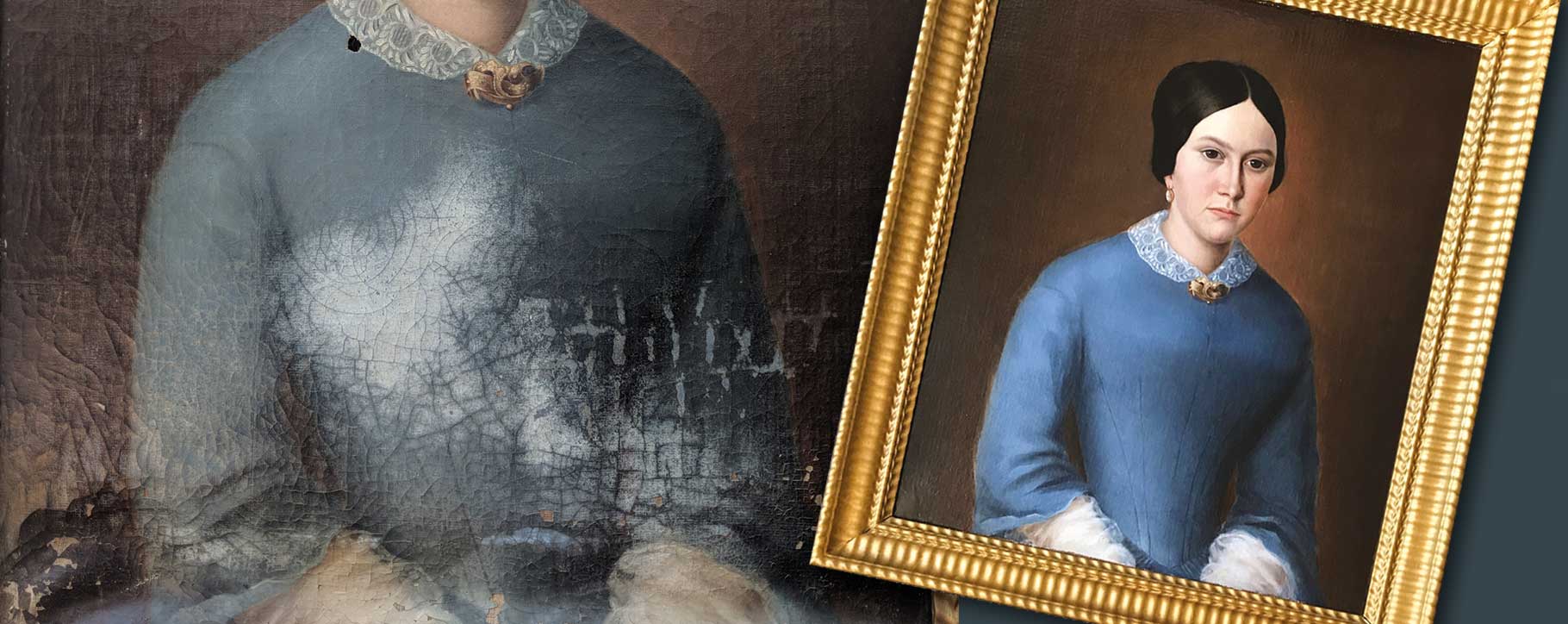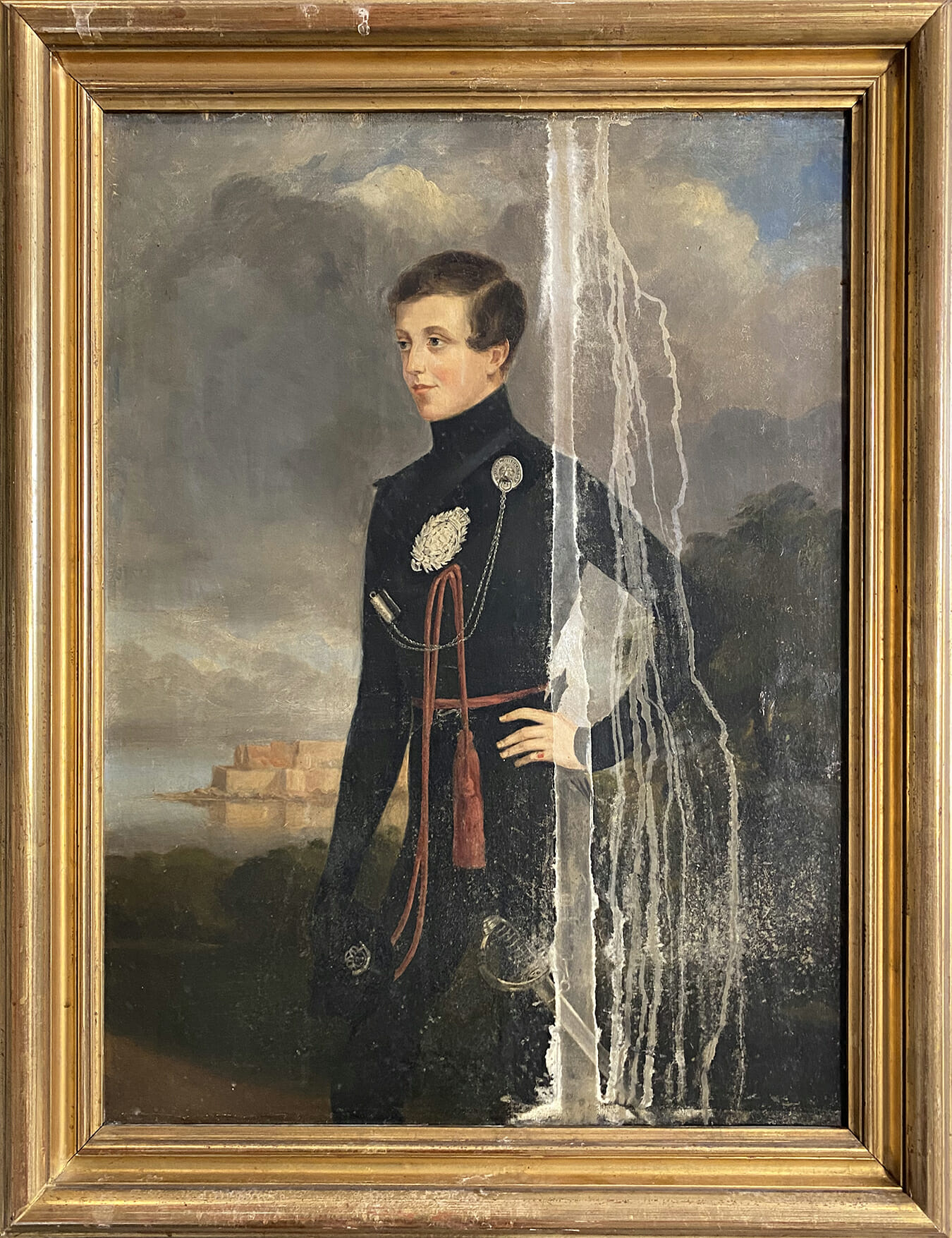
With regional flooding becoming ever more prevalent across the United Kingdom, the risk it poses to artwork increases. Knowing how to act swiftly when faced with flood-damaged painting is key in ensuring its survival.
The geography of flooding is not only limited to riverside properties, but also those in coastal locations, near floodplains, or areas prone to flash flooding due to an overwhelmed drainage system. In recent years the areas which have been at highest risk have included Yorkshire, Derbyshire, Gloucestershire, Nottinghamshire, Lincolnshire, Warwickshire and Worcestershire. The cities with the highest risk of flooding as of January 2021 are Hull, Carlisle and Lancaster.

From subtle to complete water exposure, the damage may differ depending on the type of water which has flooded into the area. For example, water damage from coastal flooding may cause secondary issues from the salt which will dry upon the piece at the same time as the water, leaving an abrasive layer which may scratch the surface. However, saltwater damage is less likely to result in the same severe mould growth which follows freshwater damage from rivers and floodplains.
Unlike ‘clean water’ damage from inside the home, such as an overflowing bath, any form of ‘brown water’ which enters a home is likely to carry contaminants from sewage systems and other toxic or acidic sources. This can have a lasting effect on an artwork, which will carry it upon the surface for years to come, if not professionally cleaned.
Any form of contact with water can result in the complete loss of a painting if there is no intervention from professional conservators, such as from our team at Fine Art Restoration Co.
The deterioration of a painting may not happen immediately but occur through the gradual decay which has been created and accelerated by the initial water damage. Whether an item has high monetary or sentimental value, the need for protective and preventive restoration treatment should always be considered promptly after an incident has occurred.
Perils faced by a painting following a flood
Flood-damaged oil paintings and acrylic paintings face a wide variety of dangers in the aftermath of such a disaster, as well as during the incident.
Accidental damage may occur as the oil painting pushes against other objects during the flood, or afterwards as items are quickly salvaged and piled together. This may result in the canvas warping or becoming dented, both of these issues may lead to cracked, lifting or flaking paint. Tears and punctures through the canvas may also occur, severely disturbing the artwork and leading to further loss of the original paint if not carefully and quickly protected and restored.

If there is a flood warning with sufficient time to act, it is recommended to have a storage location in mind for your paintings. This should either be away from the affected location entirely or in an upper room of the property. Make sure to follow safe storage procedures, which you can read more about here. If there is not enough time to store away the artwork or the conditions are hazardous, acting with caution following the flood will prevent accidental damage.
Do not allow the painting to be piled upon or against uneven surfaces, keep the canvas as flat as possible and away from any danger of other items falling against it. Ensure that the painting is handled with care, by somebody who understands the fragility of the artwork. If any decorative pieces have fallen away from the frame or paint flakes from the artwork itself, collect these if they are salvageable, as our team may be able to restore them back into place so as to keep as much of the original as possible.
Following water damage, a canvas painting may warp due to the drying process. Keep the artwork as flat as possible and allow it to dry in a well-ventilated room. Avoid any industrial drying methods which could cause further damage to the stability of the piece as it rapidly changes temperature. You may notice the artwork lifting from the canvas lining as it dries, distressing the paint layer. Avoid touching the paint layer or trying to force the canvas back into its original position.

It is common for a murky white layer to form under the varnish on an oil painting following any kind of water damage. Whilst varnish is usually a protective coating to the paint, being exposed to high volumes of water will allow it to become penetrated beneath the surface. The white layer is caused by a reaction between the varnish and the water and is commonly known as ‘blanching’. Once the varnish layer has been compromised in this way, the original paintwork is exposed and at risk of decay and loss. This needs to be treated by a professional conservator and cannot be fixed without specialist varnish removal techniques.

Surface contamination is also a threat following a flood. Without intervention, the toxic and acidic elements from brown water may cling to the artwork, depending on their origin they may degrade the painting rapidly or over a long course of time. Similarly to ‘blooming’, mould may form following water exposure, growing into the porous canvas fibres and causing disruption to the artwork. Do not try to clean mould or contamination yourself, as household chemicals may destroy the artwork. Additionally, there is an increased risk of spreading the mould spores unintentionally to other areas of the artwork.
Following an incident of flooding, the best course of action is to contact our team. Do not wait for these issues to present themselves, as the faster the painting is treated for water damage, the more likely it will be to survive in its most original state with minimal intervention and lowered restoration costs.
Our conservators are able to use specialist techniques to save flood-damaged canvas paintings and their frames. Firstly, conservation appropriate drying techniques can be used in our studio, followed by the professional cleaning of any surface contamination. Active mould spores can be eradicated and disturbed or ‘blooming’ varnish layers can be removed and replaced with a highly protective conservation-grade variety.
A warped canvas can be professionally straightened with a weight, heat and moisture treatment. Flaking or lifting paint can be consolidated with precise techniques. And torn or punctured paintings can be restored with careful thread-by-thread repair and sympathetic retouching of any missing pigments to give a seamless finish.
How to save a painting from flood damage:
- Act fast: contact our conservation team as soon as possible
- Remove from the damp or flooded location promptly
- Keep the painting flat and stable, do not let it press against other objects
- Do not attempt to clean at home
- Do not use industrial or rapid drying methods
- Do not wrap in plastic or humidity increasing materials for long periods of time






